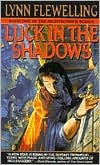 I've spent a bit of time this past week getting myself organized. Rather, I've been organizing my notes, not only for my current and some previous WIPs, but for my new story idea as well (the one I dreamed up while sleeping).
I've spent a bit of time this past week getting myself organized. Rather, I've been organizing my notes, not only for my current and some previous WIPs, but for my new story idea as well (the one I dreamed up while sleeping).To help me do this, I've started using Microsoft's One Note (tm) program, which is really cool. I've had it for several years but never got around to using it, until recently. I'm glad I did. It's a terrific way to organize notes. Now, instead of using several different programs and sifting through numerous different files, I can put all my notes in one place and access them easily and conveniently without the need to open another program. This is so easy! I even developed a template to help me start off each new novel as I convert my old notes to this new system.
If you're not familiar with One Note (tm), understand that it's based on the idea of a three-ring binder. If you want to organize notes in a binder, you will fill the binder with pages and you'll probably also put some dividers in there to separate the pages into various sections. With this program, you create electronic "notebooks". The notebooks are listed down the left side of your screen so you can move from one notebook to another notebook with just one click. Within each "notebook" you create "dividers" (tabs across the top of the screen) and "pages" (tabs running down the right side of the screen). Click on a notebook, click on a divider, then click on a page and you see that page in the center of the screen. A very simple format and incredibly easy and convenient to use.
I create a new notebook for each novel. Across the top, I have dividers for major sections, including:
PROJECT (with pages for a project time line, weekly goals, work notes to remind me of what I need to do next, and pages for keeping track of eventual submissions, etc.);
IDEAS (a "sandbox" for brainstorming ideas about plot, characters, etc. -- once I have something I want to use, I copy and paste it over to other sections as appropriate);
WORLD (for fantasy world-building, including maps, descriptions of places, and pages for various aspects of the world including mythology, political system, history, culture, etc.);
CONLANGS (if any);
CHARACTERS (with a table listing all the characters, their ages, places of origin and brief identifications, then separate pages for each of the important characters to flesh them out); and
PLOT (with an Overview, and pages for various tables and lists and details, and a tab for each ACT (I divide my stories into Act I, Act II A, Act II B and Act III), where I put details about chapters and scenes within those portions of the story.
It's a lot of work on the one hand, but it has a tremendous, positive impact. In part it makes the process of writing a novel somewhat impersonal. It becomes like any other job: do this, then do that, figure this out, problem solve that, tie this together, and move on, and do it by next week. This logical, organized, impersonal side of the writing process helps make the chaos of the creative side more bearable. I'm amazed at how much information I can keep in one place and how quickly I can locate individual pages using the navigation system of this program -- so much better than hunting around inside multiple lengthy text documents and spreadsheets!
It's been a lot of fun getting this new system up and running, and I'm so glad I finally tried out One Note (tm). It's well worth the effort to learn how it works and develop a system using it.
Best wishes for keeping yourself organized,
Adrian








No comments:
Post a Comment